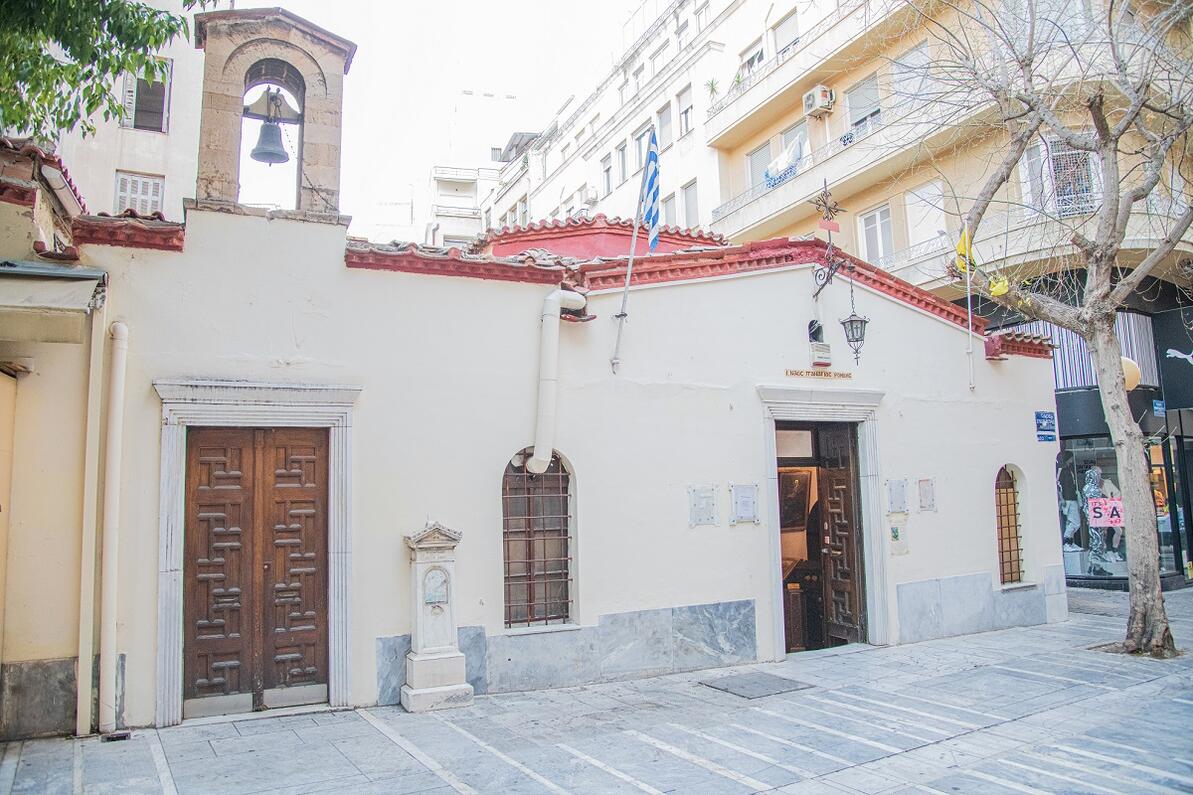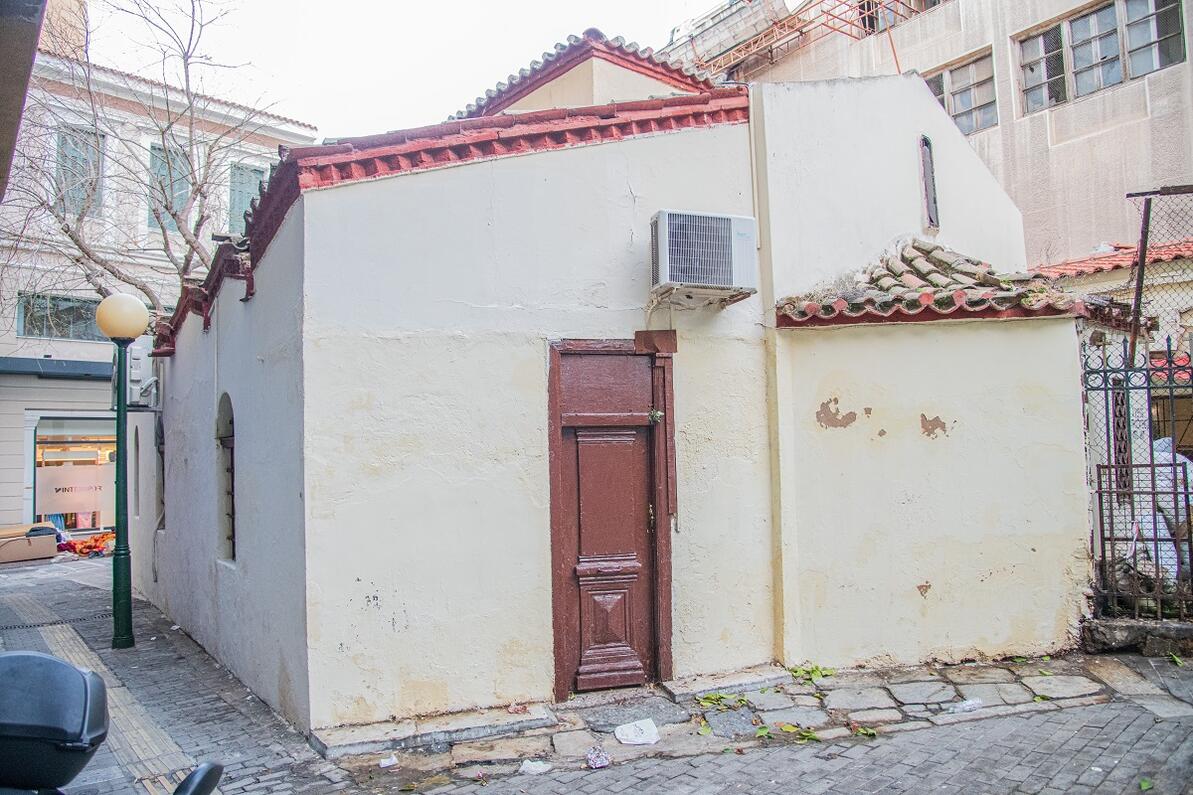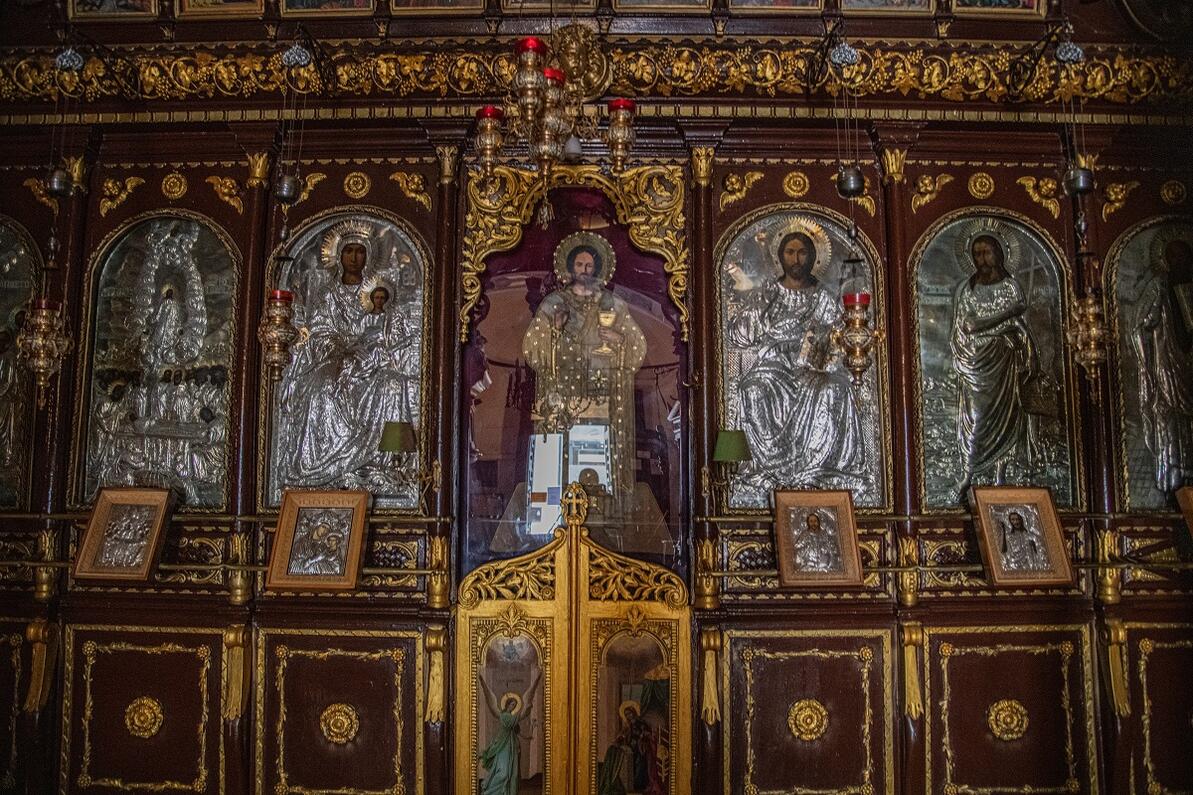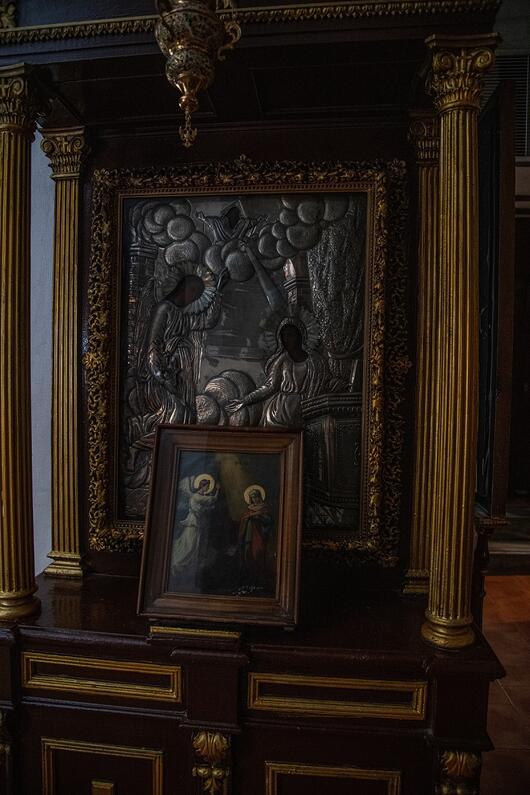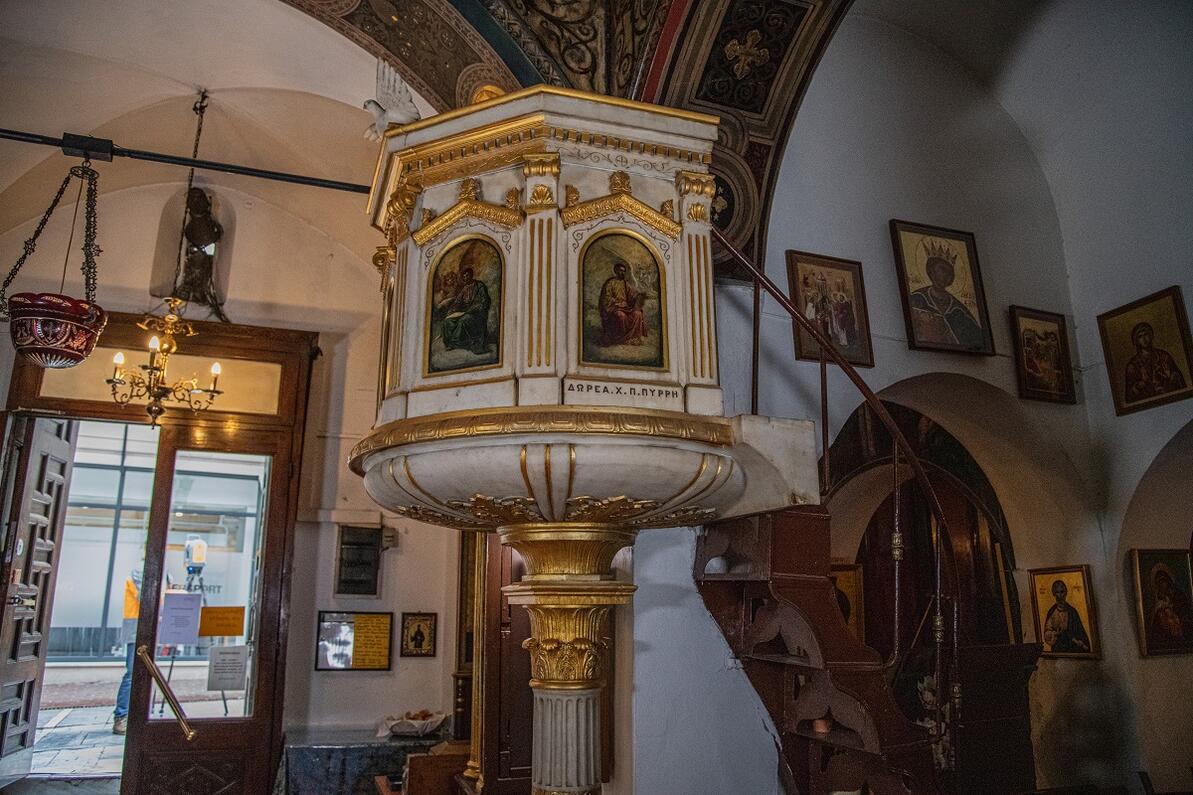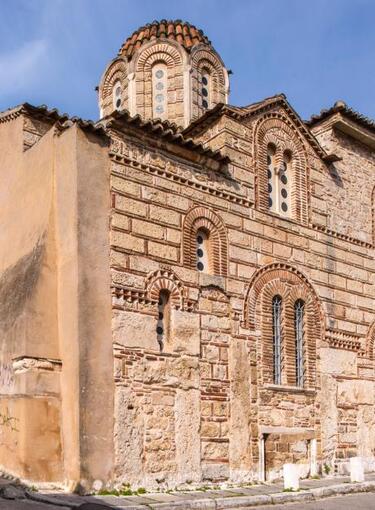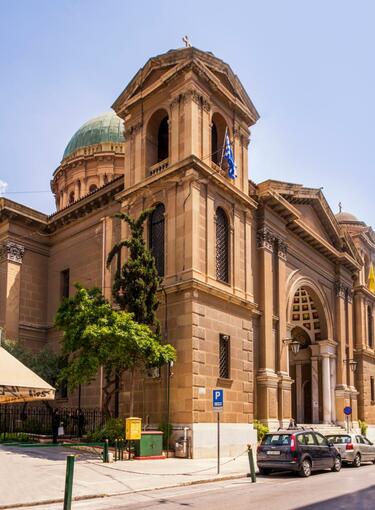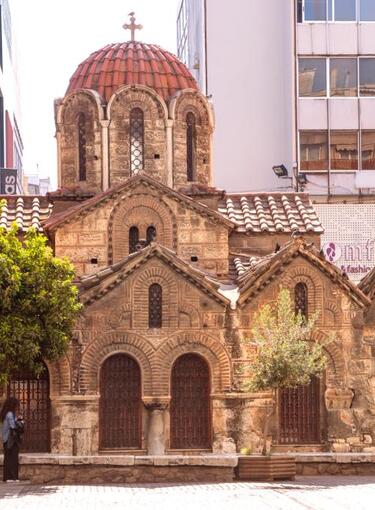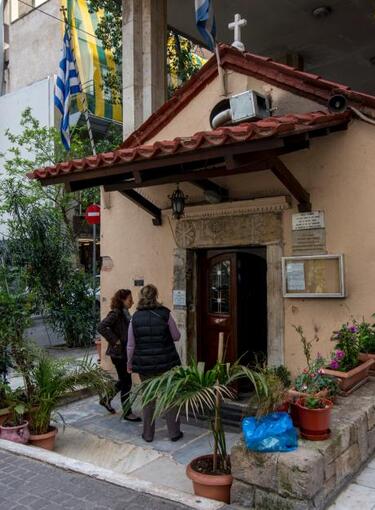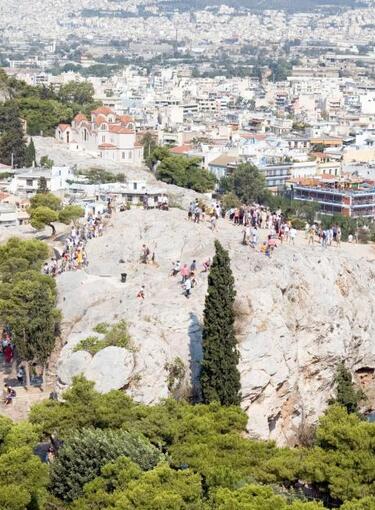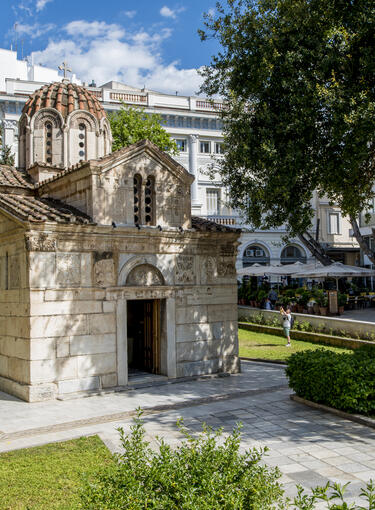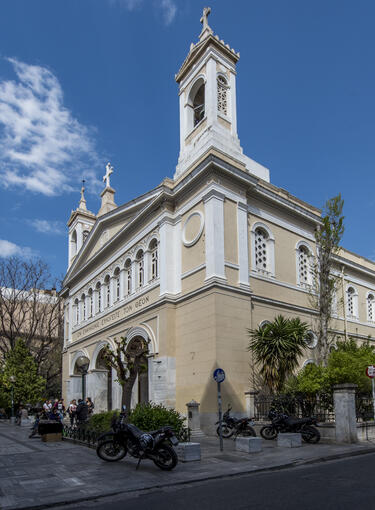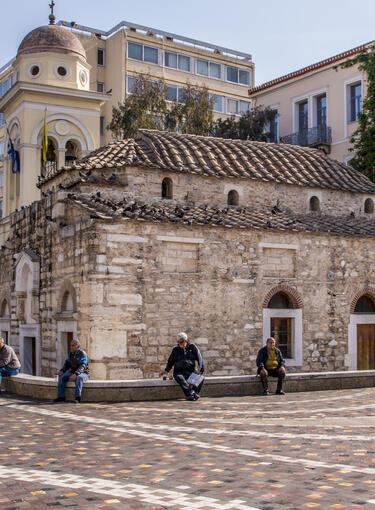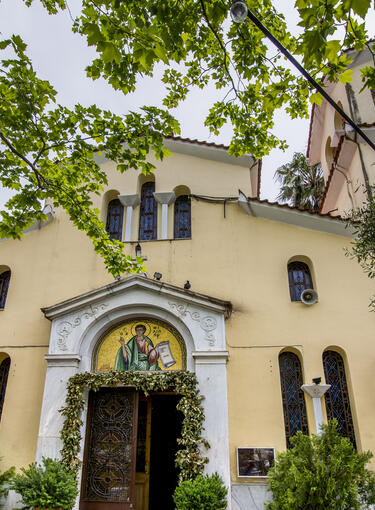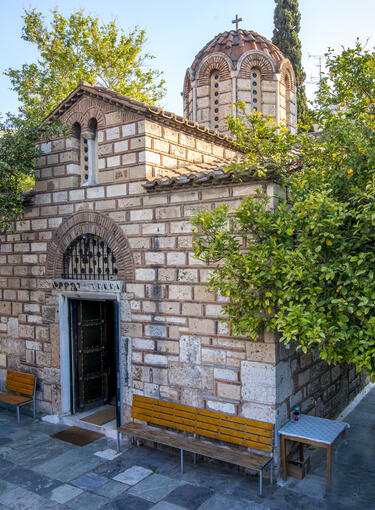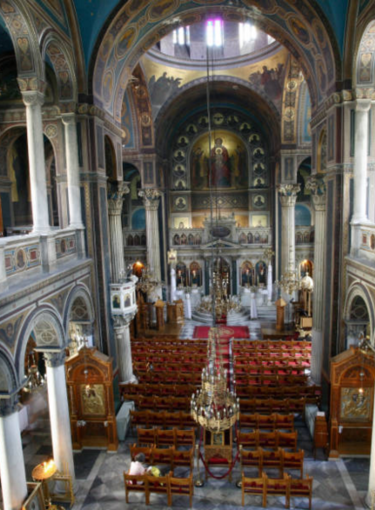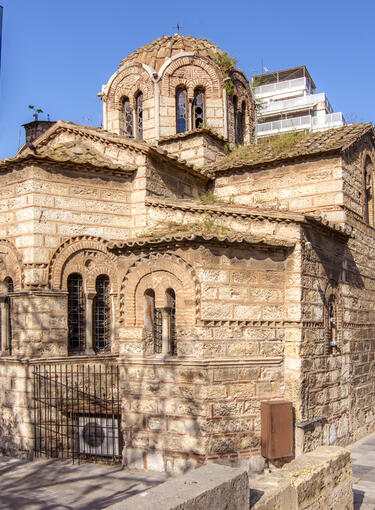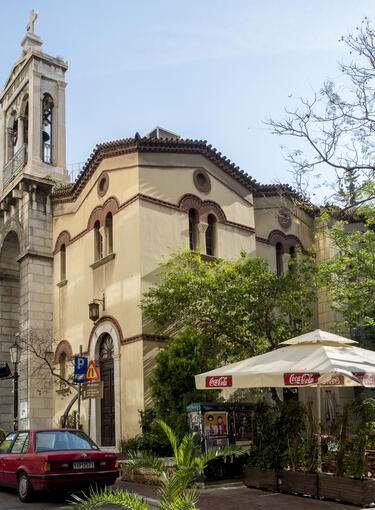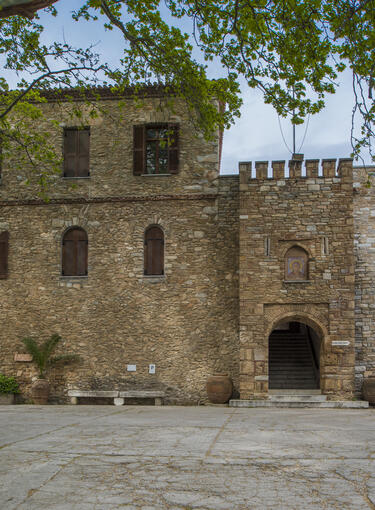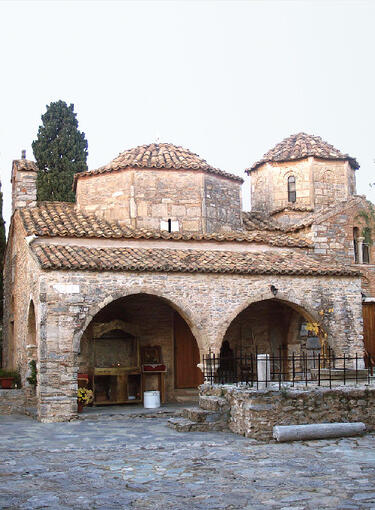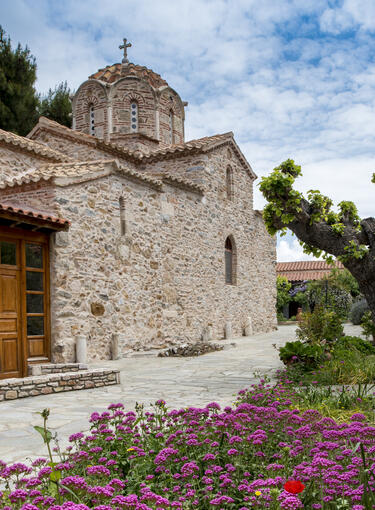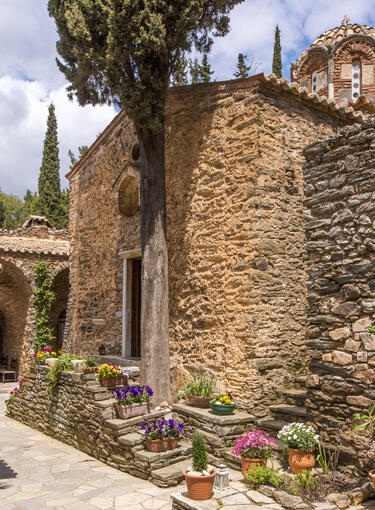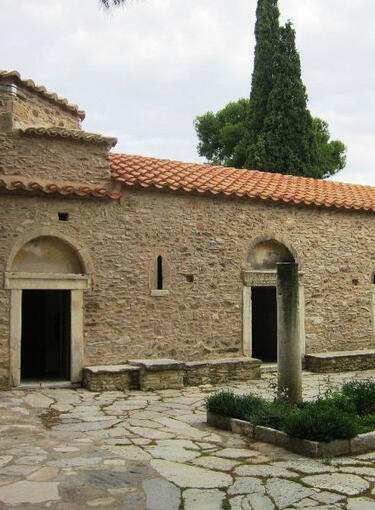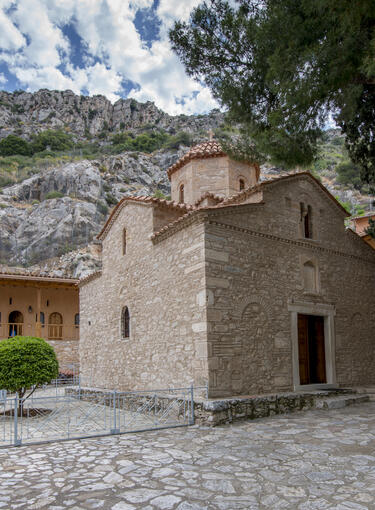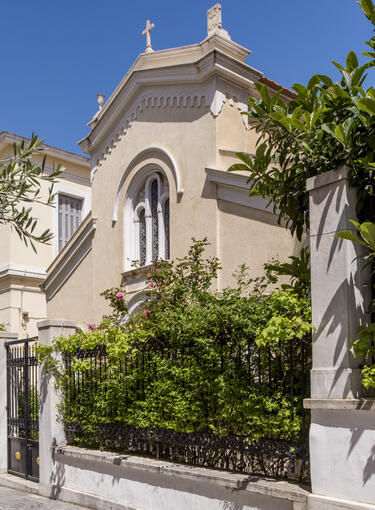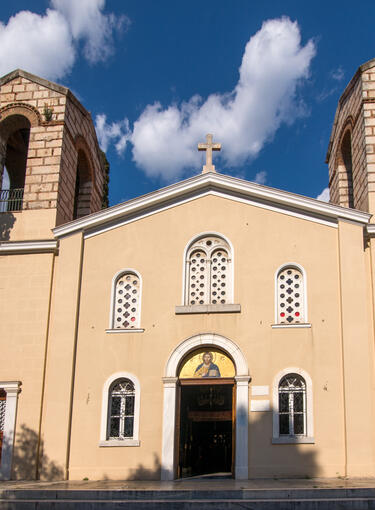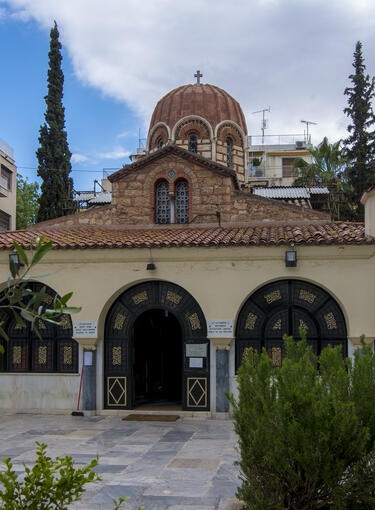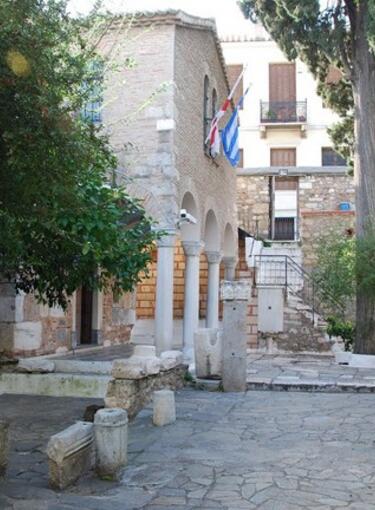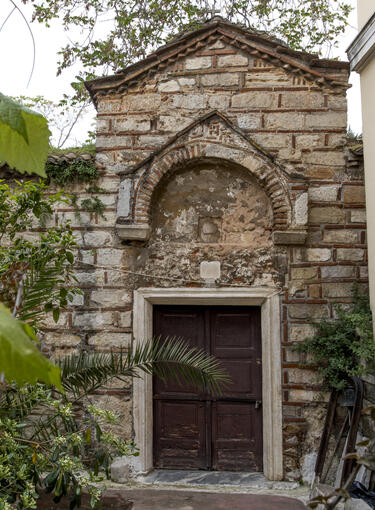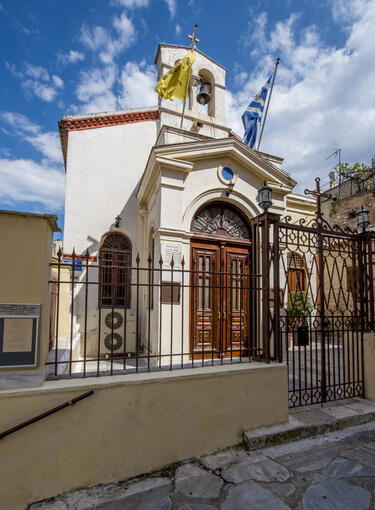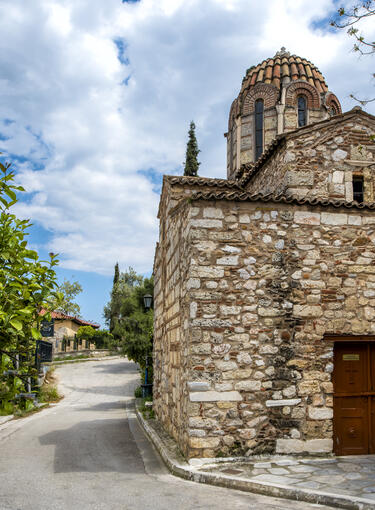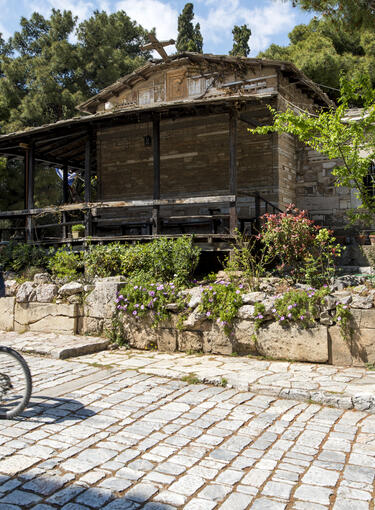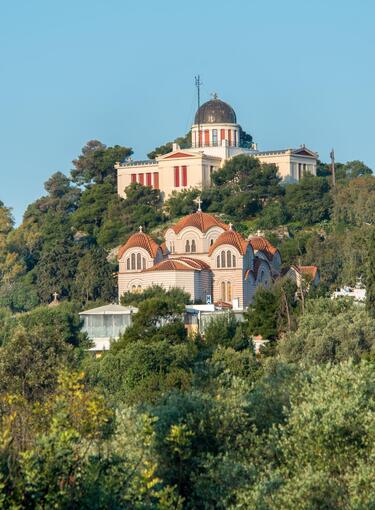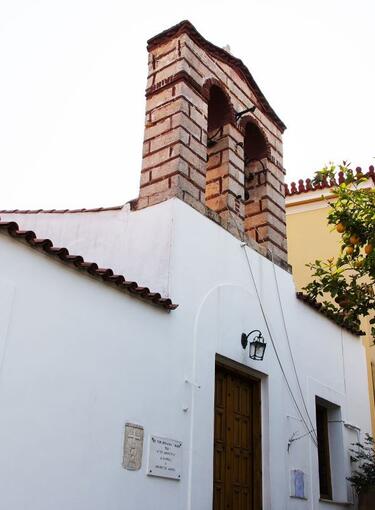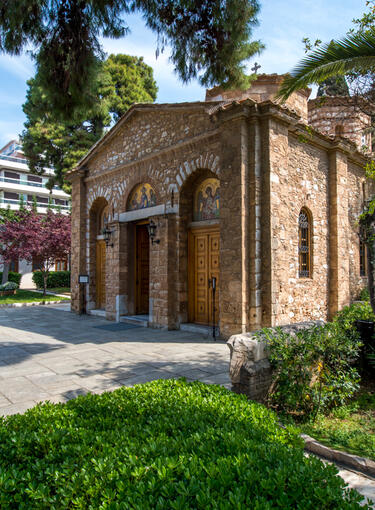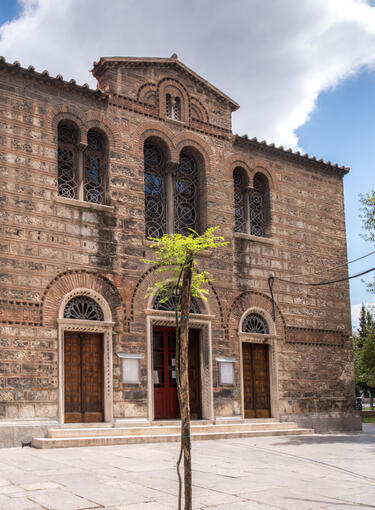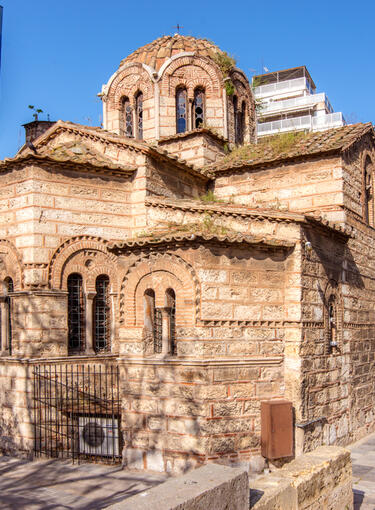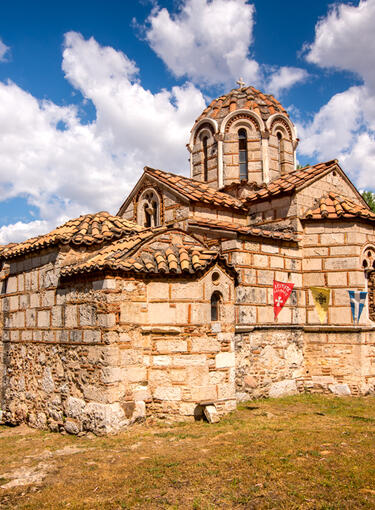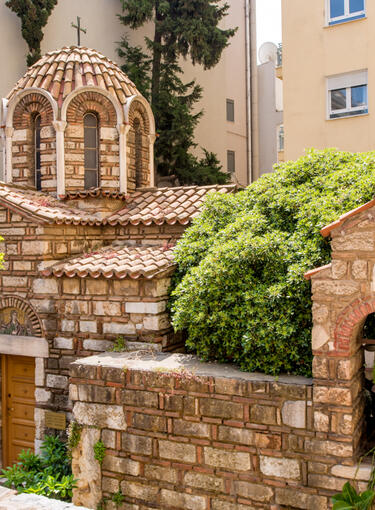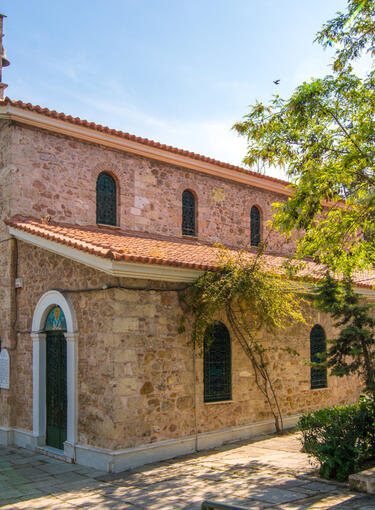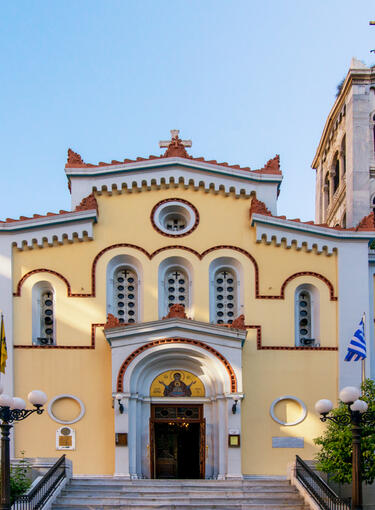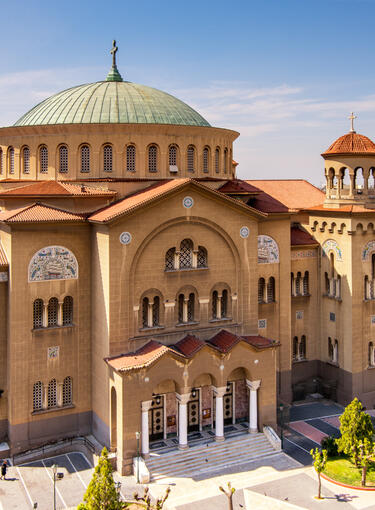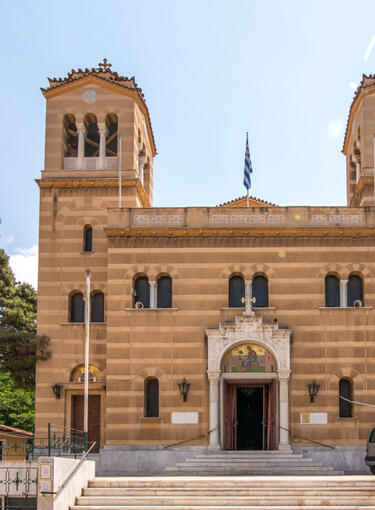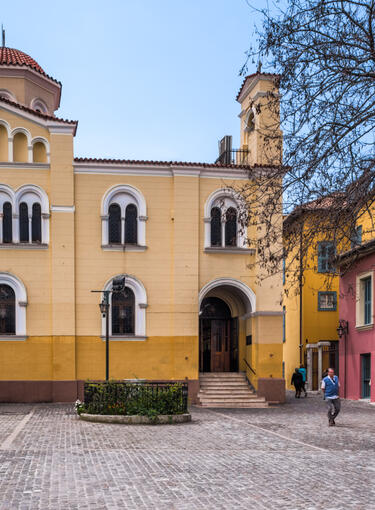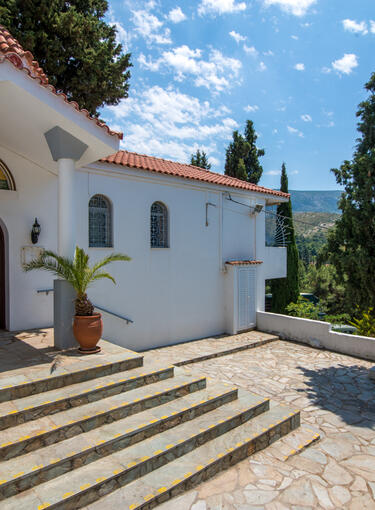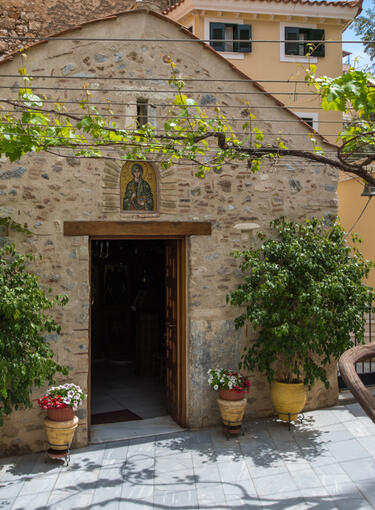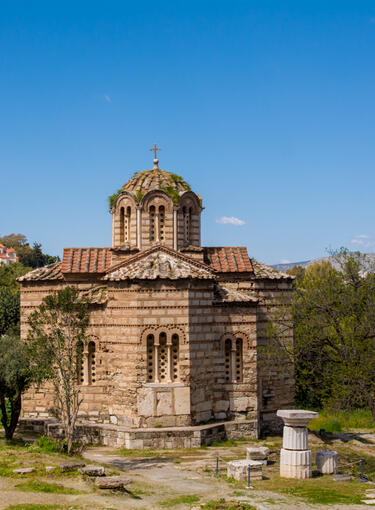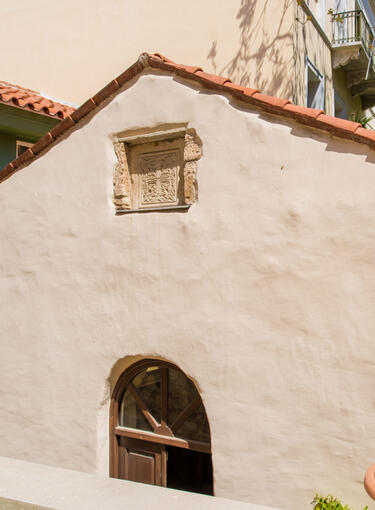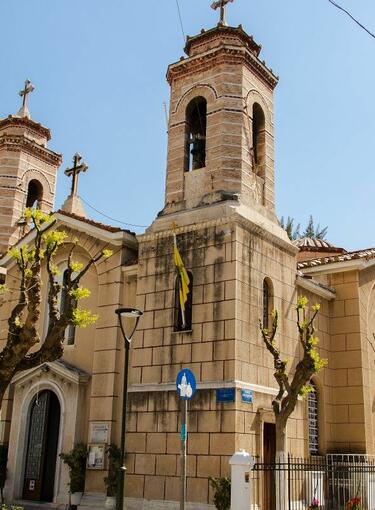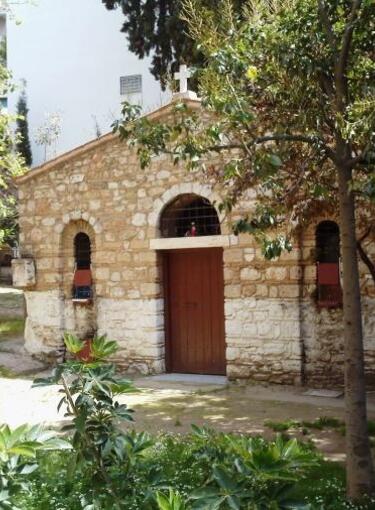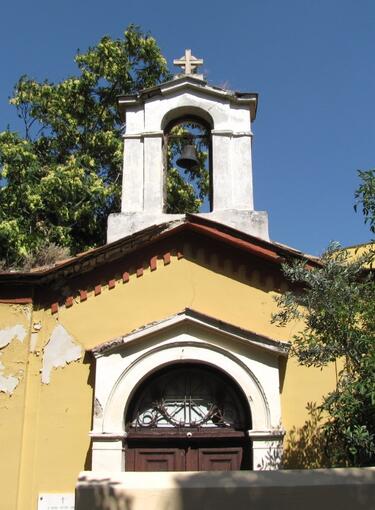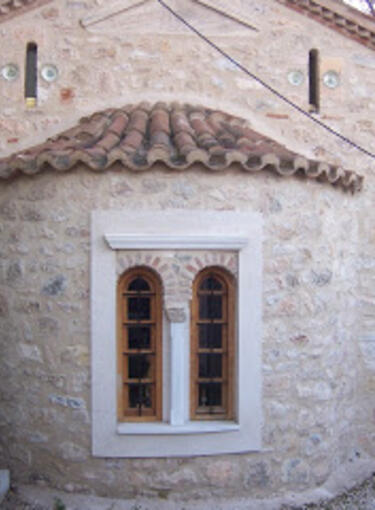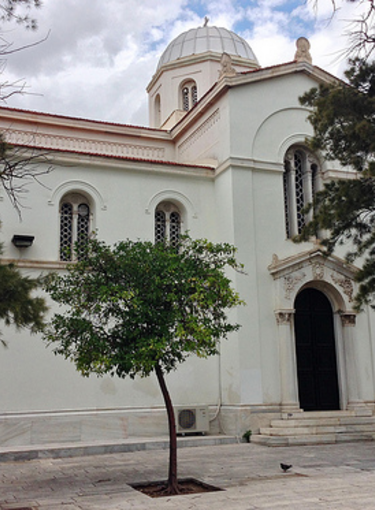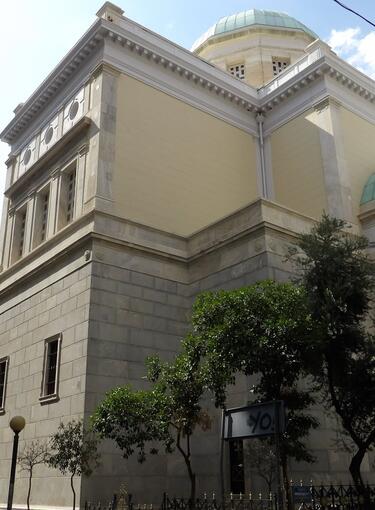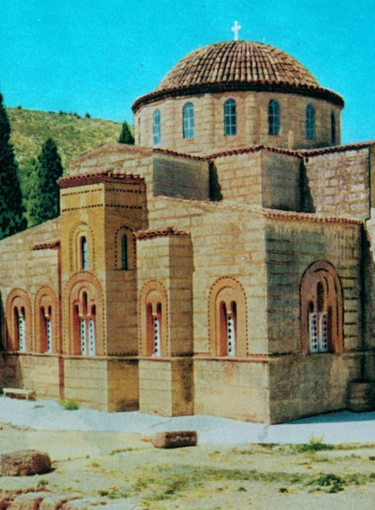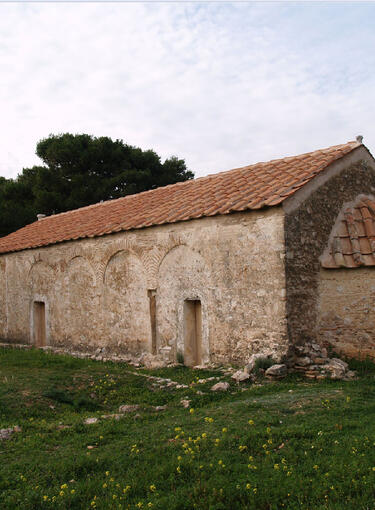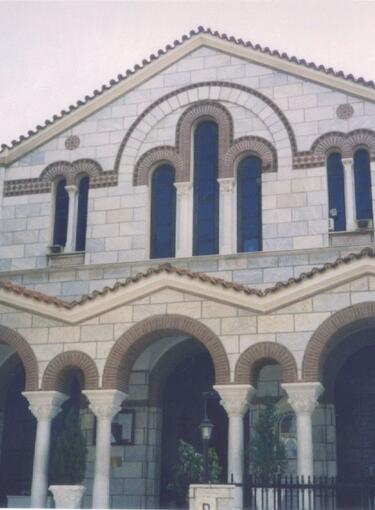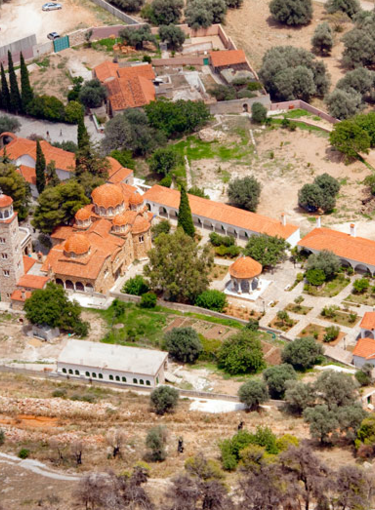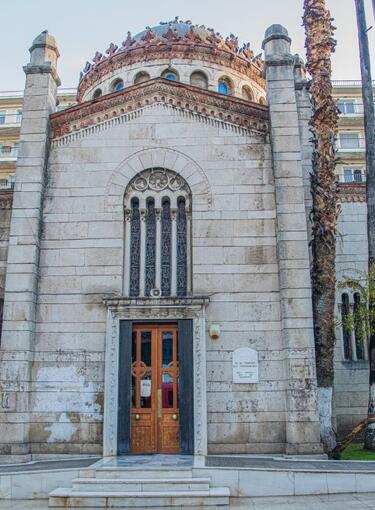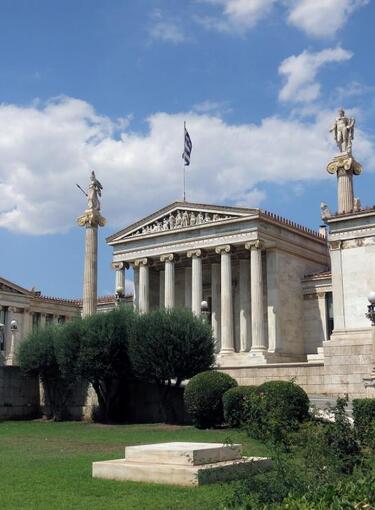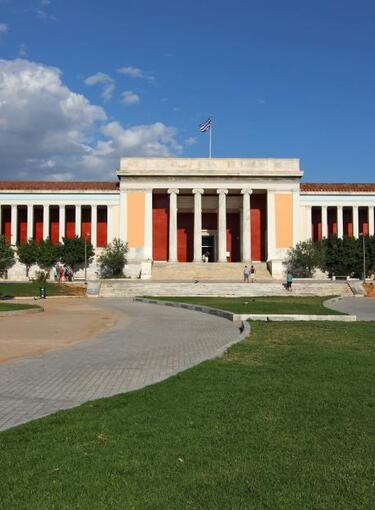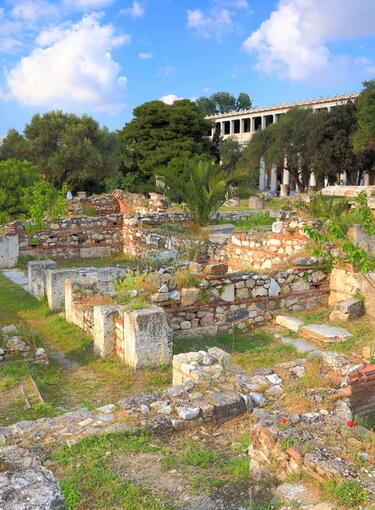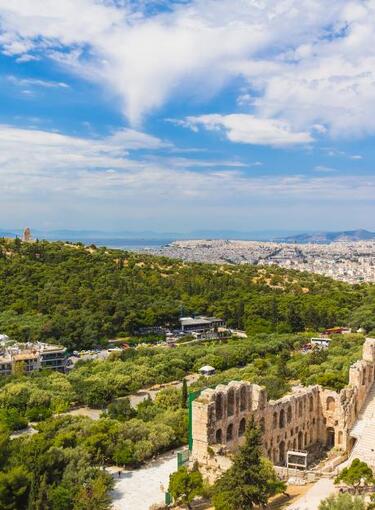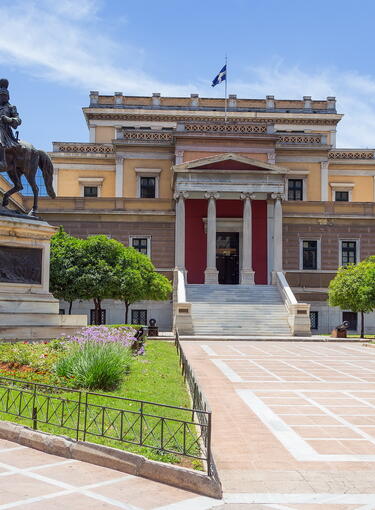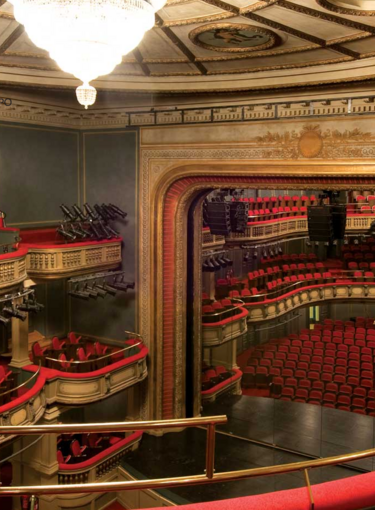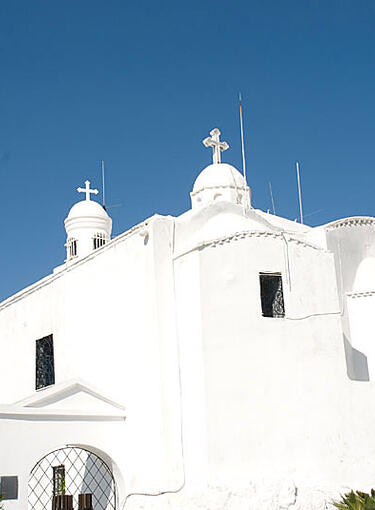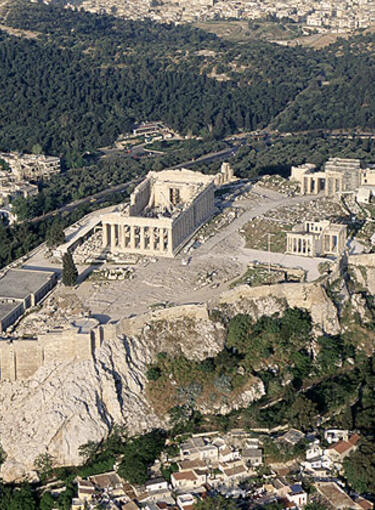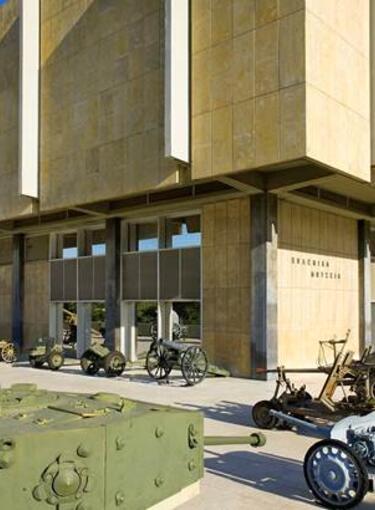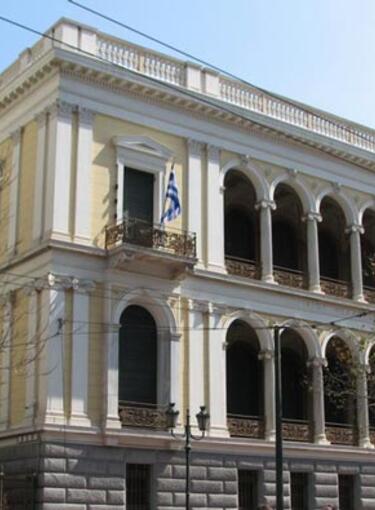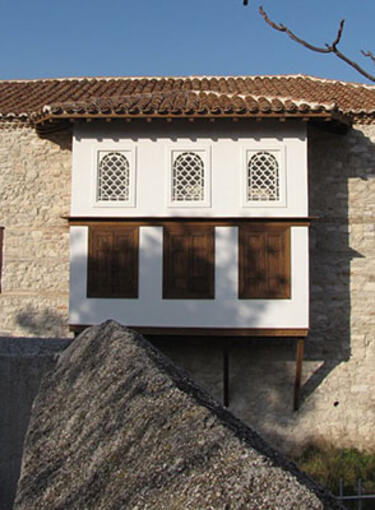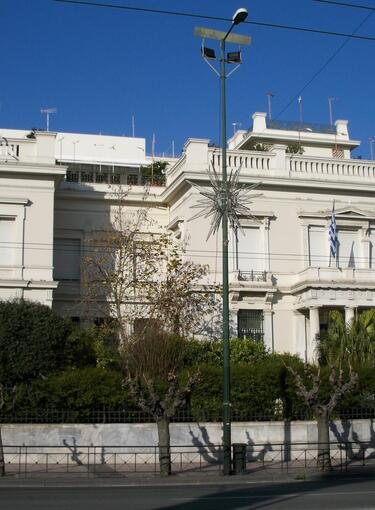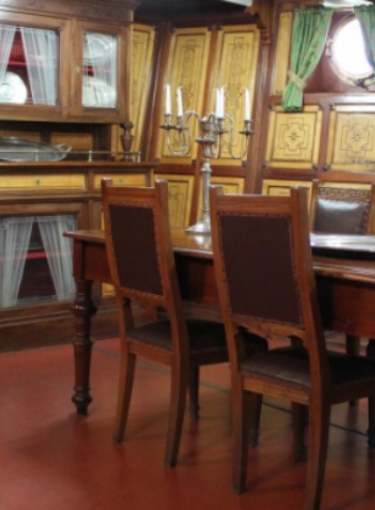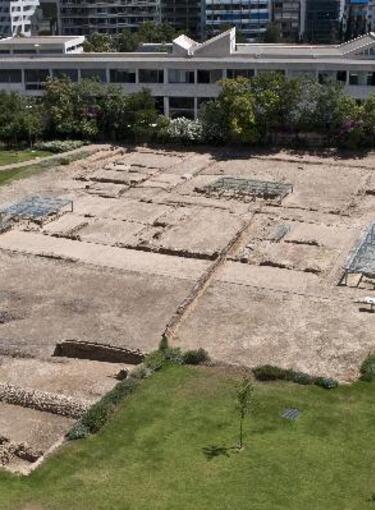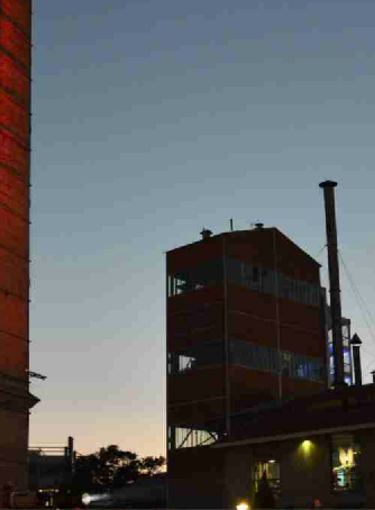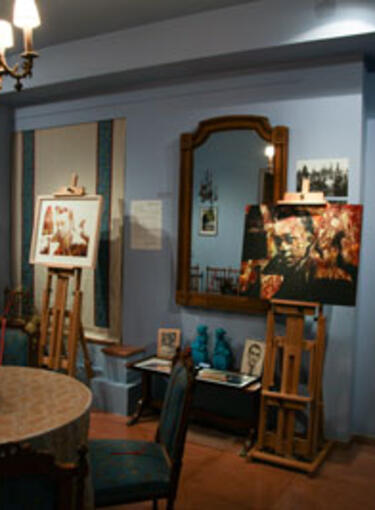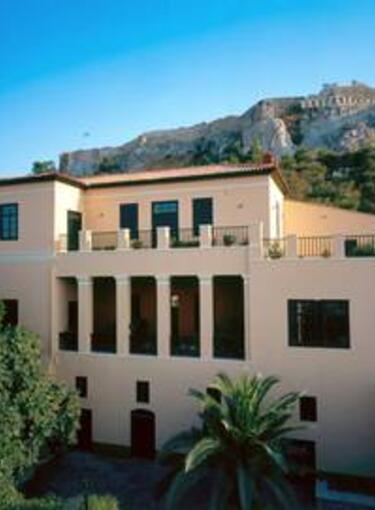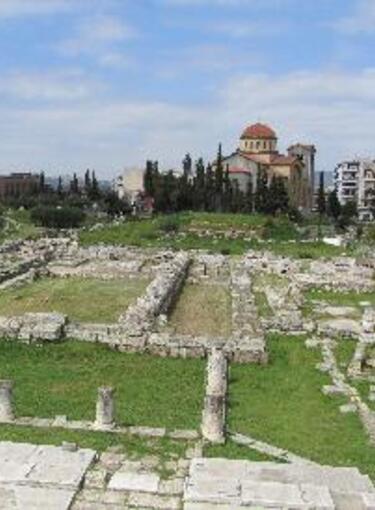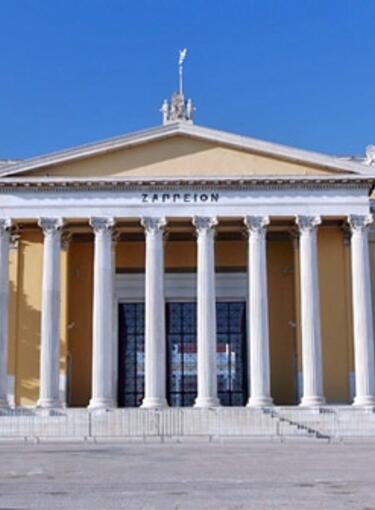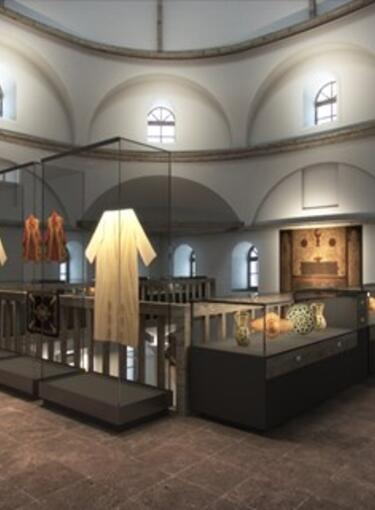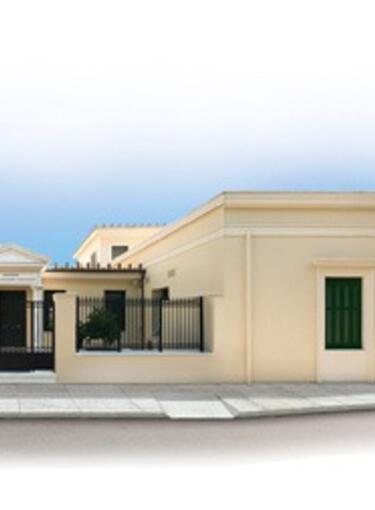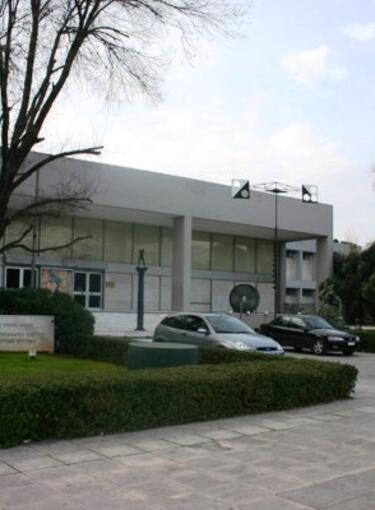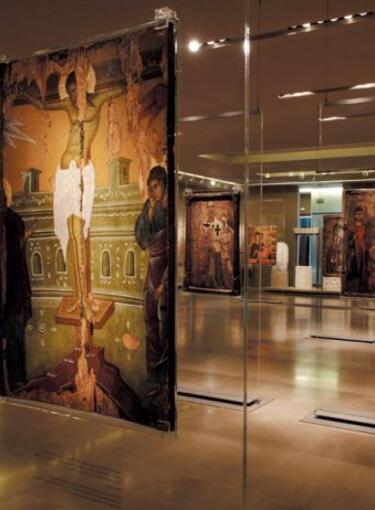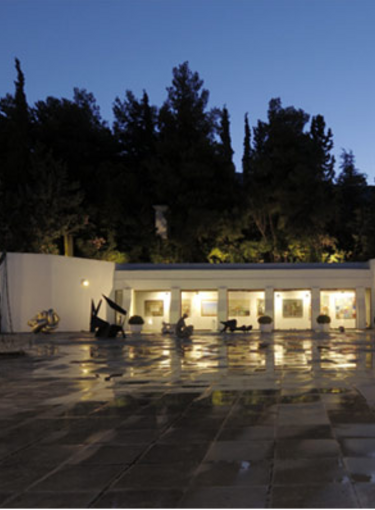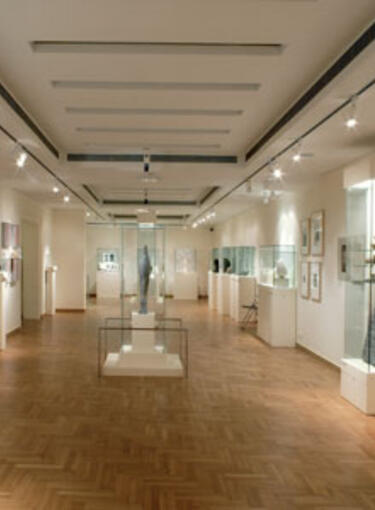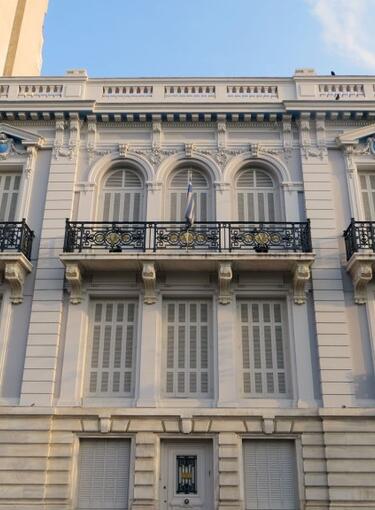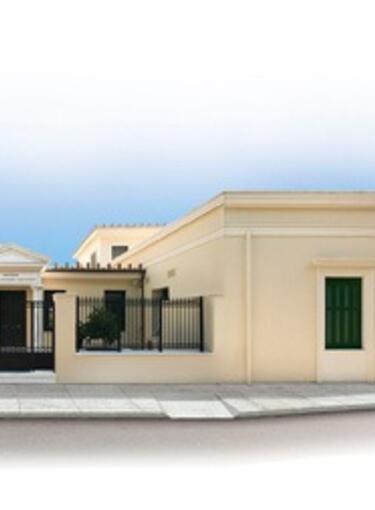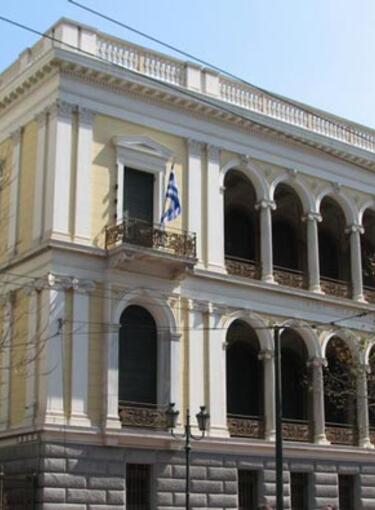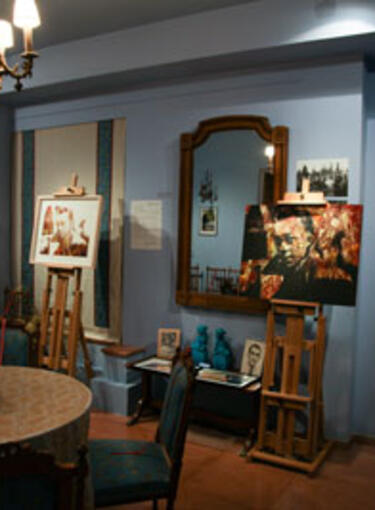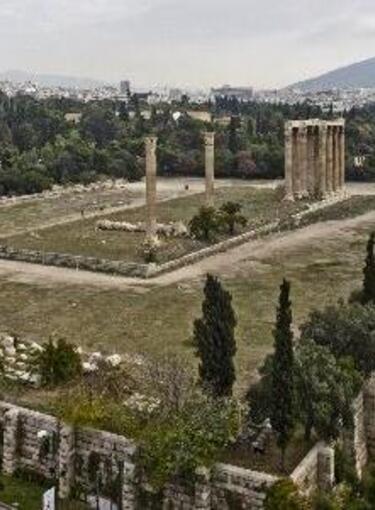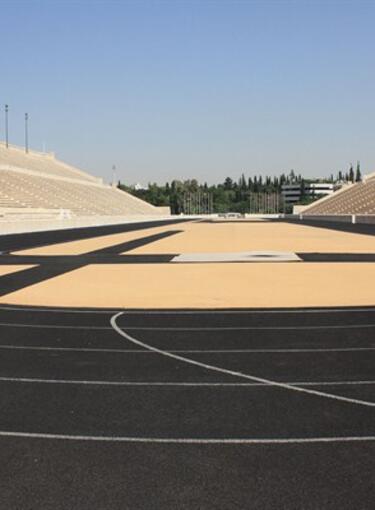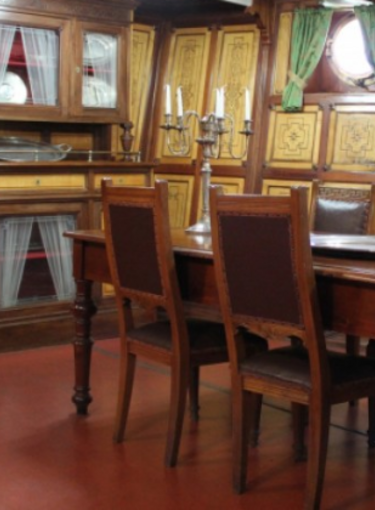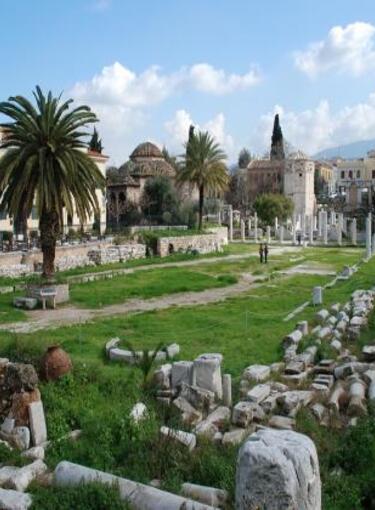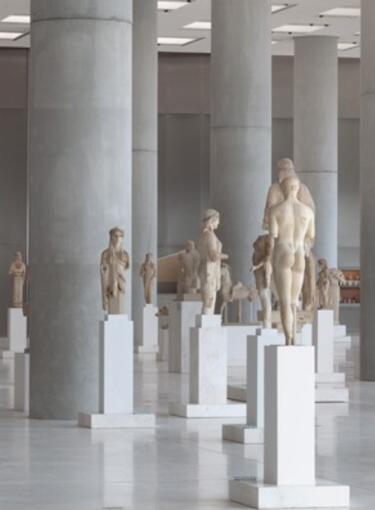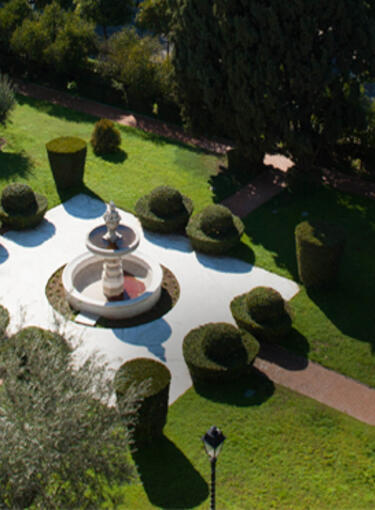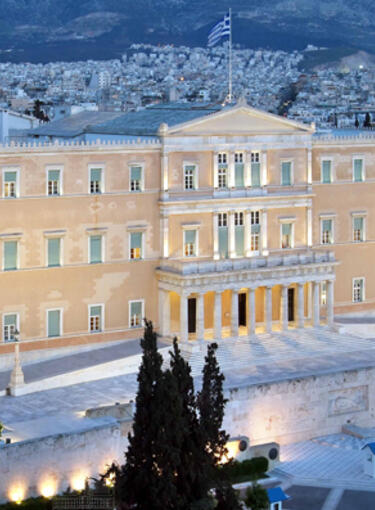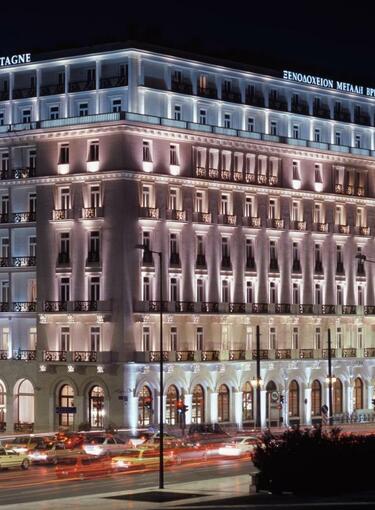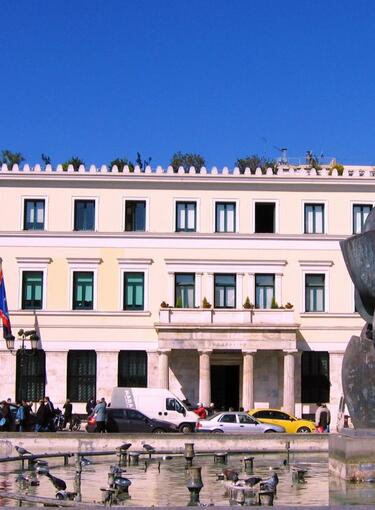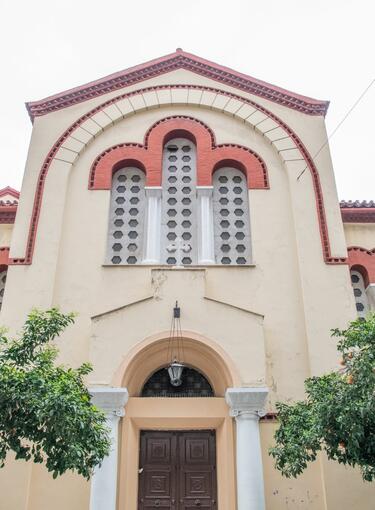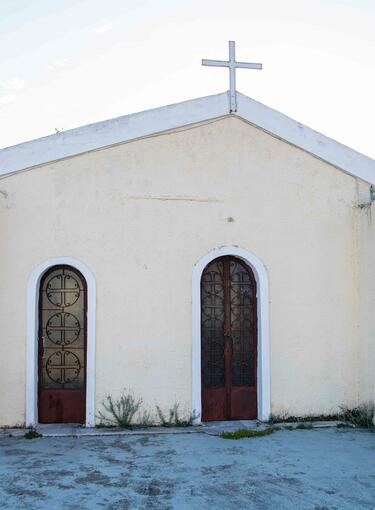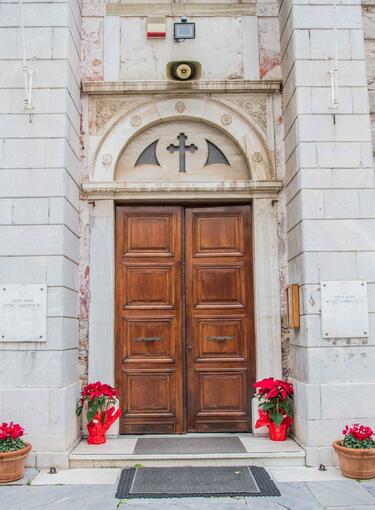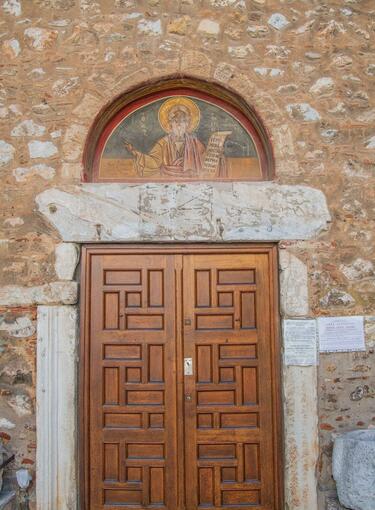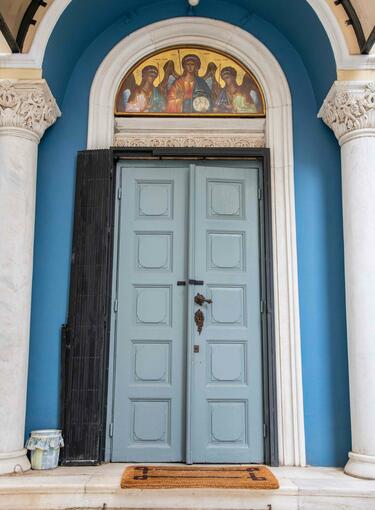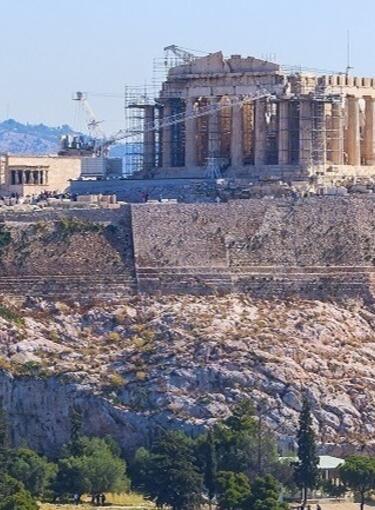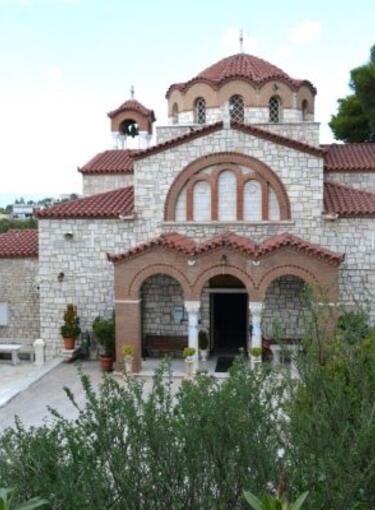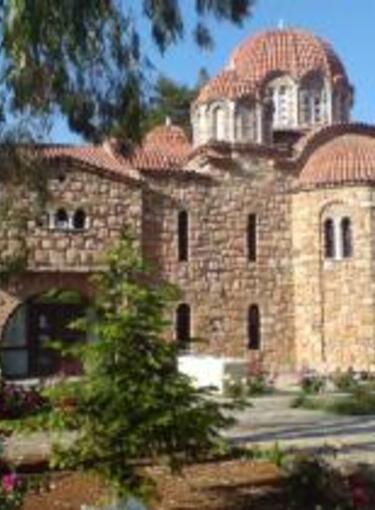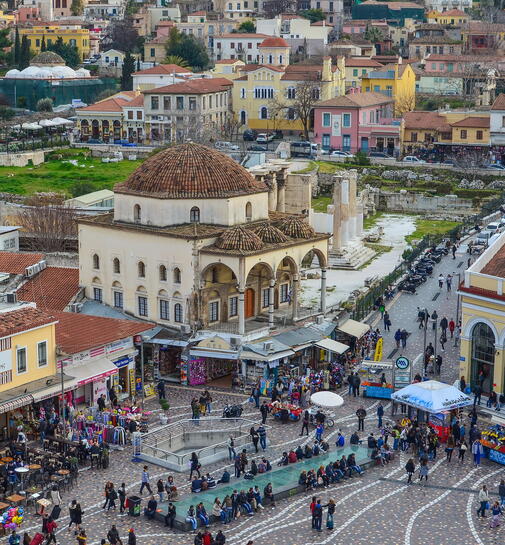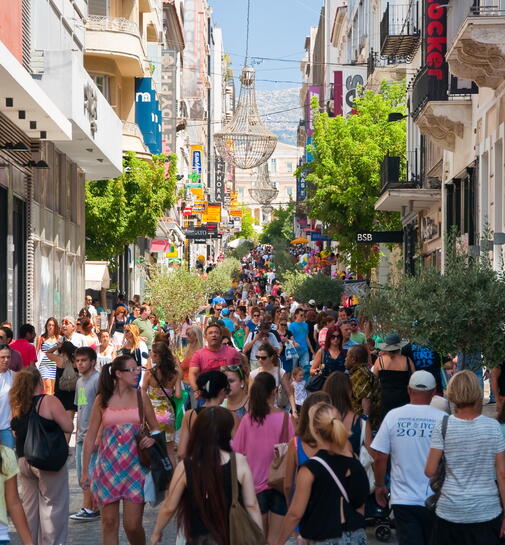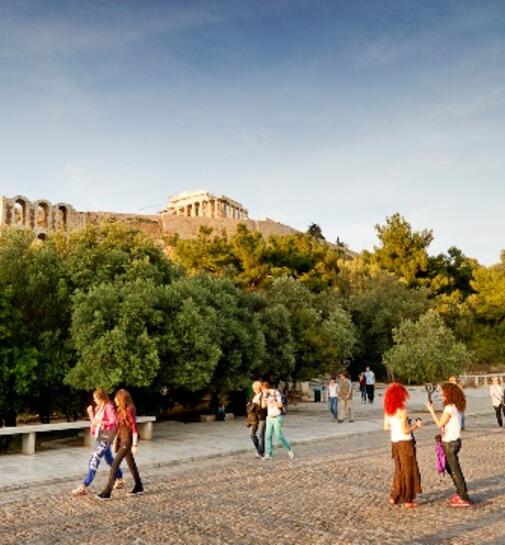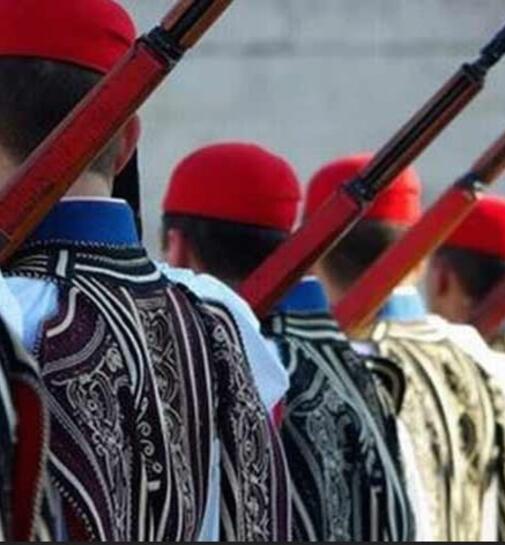The Holy Church of Panagia Romvi is located at 10 Evangelistria Street, near the Metropolis of Athens and is dedicated to the Assumption of the Virgin Mary. It is a three-aisled basilica with a vaulted roof, which is "composite", that is, it consists of a cylindrical arch, which east and west ends in quatrefoils, which go up into angular niches (semi-circular niches).
The aisles are separated by two rows of colonnades. It is an original building of the Byzantine period (the type was introduced in Greece between the years 700-1000), which was renovated during the Turkish occupation.
Later, a double-aisled basilica was added on the north side.
In 1966, at the expense of the T.A.K.E. (today T.P.O.E.E.K.E.), to which it belongs, and under the supervision of the competent Ephorate of Byzantine Antiquities, conservation work was carried out.
From the removal of the old coatings it was found that the masonry was of common construction and of negligent appearance, and therefore coatings were again applied. In 1973-1974 in front of the south-west corner of the church, remains of masonry, part of an Ionic base, two pieces of an armoured column and a fragment of a mouth of a pythagium were found.
The present name "Rompi" apparently came from its renovator (the builder), who belonged to the Rompi family, since in old Athenian deeds the notary Rompas is mentioned in 1622.
CHURCH OF VIRGIN MARY OF ROMVI
At the heart of the historical commercial centre of Athens, on Evangelistrias Str. is situated the church of Virgin Mary of Romvi, one of the very few churches preserved from the zonings of the 19th century. The church is dedicated to the Dormition of Virgin Mary and celebrates on the 15th of August.
The name Romvi originated from a corruption of the surname of the Athenian lordly family of Rombis in the era of the Ottoman rule, which had as a family church, the church of Virgin Mary which is preserved until this day.
The church which is a building of Byzantine times, of the 11th century, but was renovated in the years of the Ottoman rule, belongs to the type of the three–aisle barrel-vaulted basilica with a complex roof. It comprises a cylindrical barrel-vault, which westerly and easterly ends at semi-domes which run on corner niches.
At the northern side of the church there is a later annex, which is separated by it with a colonnade and there are two oblong chambers, of which the northern was used at times as a chapel. Repairs which took place at the church during the 19th century in part distorted its external sides.
In 1966, at the expenses of the Fund of Clergymen of Greece (now Welfare Fund for the Orthodox Vicarial Clergy of Greece) to which it belongs and with the supervision of the competent Ephorate of Byzantine Antiquities conservation works were performed.
From the removal of old coatings it was found that the masonry was of common construction and of neglectful appearance and for this reason the coatings were added back again.
In 1973–1974 in front of the southwestern corner of the Church were found relics of masonry, a part of an Ionian pedestal, two pieces of a smooth-surface column and a fragment from a rim of a pithos jar.
In the interior of the church, the three aisles are divided into two rows of columns of white marble. A special impression to the pilgrim-visitor is caused by the wooden carved templon with two rows of its icons having been covered with a silver coating and gold-plated decorative elements. Between the two rows of icons as a decorative element is interjected an oblong row of gold-plated vine tendril with grape, rosettes, and stylized geometrical shapes (squares) cover the intermediating gaps of the basis of the icons of the lower row. The bishop’s throne bears a similar style to the one of the templon originating evidently from the same workshop. Observing it, the attentive gaze focuses mainly on the gold-plated decorative features with the grape embedded within a frame and the palmettes crowning the top.
The octagonal ambo, which is delineated by corresponding rectangular outlines, decorated with gold-plated coatings is supported by a longitudinal column with similar decoration.
Elevating the eye to the barrel–vaulted roof the pilgrim witnesses with particular interest the depiction of Christ Pantokrator.
The portable icon of the Dormition of Virgin Mary, with Virgin Mary and the angel silver-covered impresses, as the holy figures surrounding the Mother of Christ, having in the background the Holy City of Jerusalem, are depicted with subtleness, highlighting features of the Cretan hagiographic art.
The icon of Virgin Mary Portaitissa imposes itself at the icon stand surrounded with adornments by a number of silver vocative offerings, tokens of the deep faith of the pilgrims in the miraculous intervention of the Theotokos.


